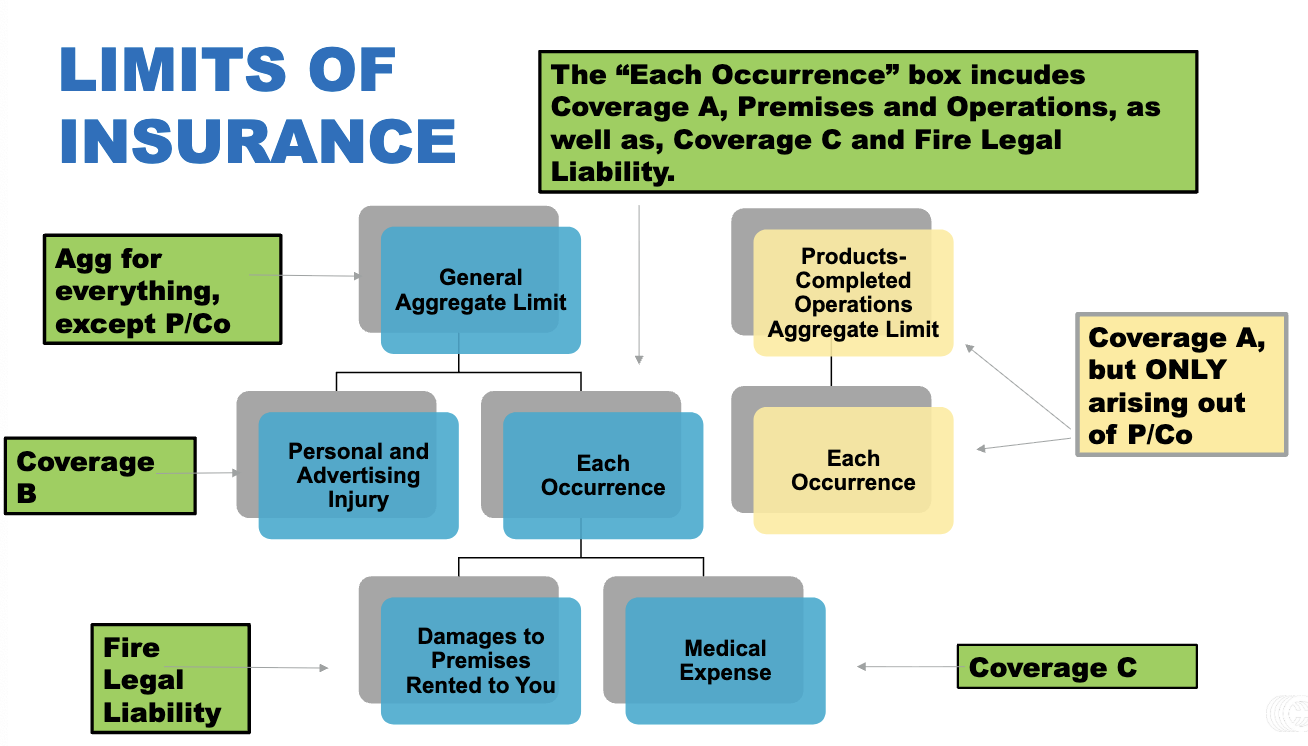RMIN 5100S - CGL Insureds Limits
1/4
There's no tags or description
Looks like no tags are added yet.
Name | Mastery | Learn | Test | Matching | Spaced |
|---|
No study sessions yet.
5 Terms
Who is an Insured?
Section II of the CGL indicates the individuals and organizations that are considered “insureds”
If designated in the declarations, insureds include:
Owner and spouse if a sole proprietorship
Partners, members, and their spouses if a partnership or joint venture
Members and managers if a limited liability company (LLC)
Officers, directors, and stockholders if a corporation
A trust and trustees, but only with respect to their duties as trustees
Insureds also include persons not named in the policy:
Volunteer workers acting for the organization
Employees acting within the scope of employment
Any person or organization acting as a real estate manager
A legal representative if the named insured should die
Any newly acquired or formed organization, other than a partnership, joint venture or LLC
Basically owners and spouses
Who is is an insured? NOT in these cases
Employees / Volunteers are INSUREDS…but not covered under these
Co-Employee and Related
Medical Professional Liability
Named Insured’s Employees’ or Partners’ property
Unnamed Partnerships, Joint Ventures or Limited Liability companies will ONLY be covered if they are named (usually $$)
NOTE: This is the only Professional Liability that is excluded in an unendorsed CGL Policy. Typically, the specific Professional Liability will be excluded via an endorsement, OR Coverage would not apply because it is not BI/PD or P&AI)
*Just a reminder: Applies to A, B & C
Supplementary Payments - Coverages A and B
We will pay, with respect to any claim we investigate or settle, or any "suit" against an insured we defend…These payments will not reduce the limits of insurance
CGL Supplementary Payments
All expenses we incur.
Up to $250 for bail bonds.
Cost of bonds to release attachments.
Reasonable expenses incurred by the insured at the insurer’s request
Court costs or other costs assessed against the insured.
Prejudgment interest awarded against the insured.
All interest…that accrues after entry of the judgment
Limits of Insurance
Section III of the CGL contains the coverage limits
The general aggregate limit is the maximum amount that the insurer will pay for the sum of the following:
Damages under Coverage A (except for amounts paid for products-completed operations hazard), damages under Coverage B, and medical payments under Coverage C
The policy contains a separate products-completed operations hazard aggregate limit
A personal and advertising injury limit is the maximum paid under Coverage B
An each-occurrence limit is the maximum amount the insurer will pay for the sum of damages under Coverage A and medical expenses under Coverage C arising out of any one occurrence
The damage to rented premises limit is the maximum amount paid for damages under Coverage A due to a single fire
The medical expense limit is the maximum amount paid under Coverage C because of a bodily injury sustained by any one person
